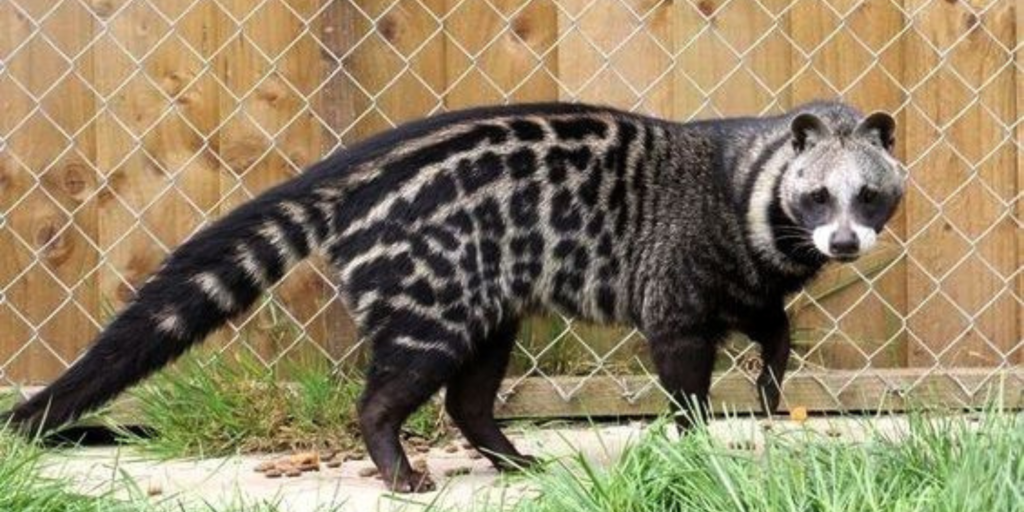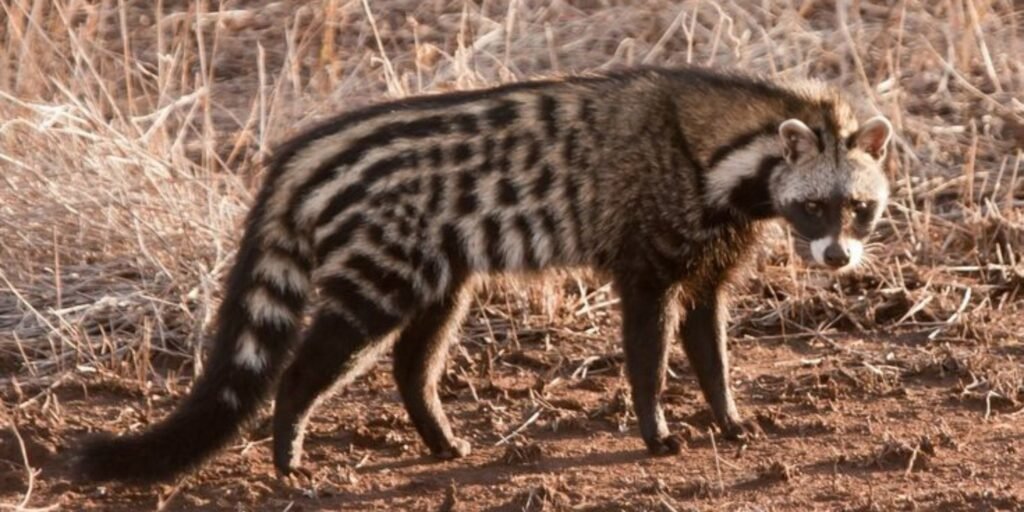The African civet, with its distinctive appearance and unique behaviors, often prompts curiosity and questions. One common question that arises is: Is an African civet a cat? Despite their cat-like appearance, African civets are not cats at all. They belong to a completely different family within the animal kingdom. In this article, we will explore the African civet’s classification, its relationship to cats, its behavior, its habitat, and why people might mistake it for a cat. By the end, you will have a clearer understanding of what this fascinating creature truly is.
What Is an African Civet?
The African civet (Civettictis civetta) is a medium-sized mammal native to sub-Saharan Africa. It is often confused with cats due to its appearance and some of its behaviors. With a body length ranging from 50 to 70 centimeters, a long tail, and a face reminiscent of a cat, the African civet certainly looks like a feline. Its fur is typically grayish with black markings, and it has a distinctive black mask-like pattern around its eyes. However, despite its outward resemblance to cats, the African civet is not related to them.
The African civet is part of the Viverridae family, which includes other civets, genets, and the African linsang. This family of animals is closely related to the order Carnivora, which also includes dogs, bears, and raccoons, but civets are distinct from the Felidae family, to which cats belong.
The Family Tree: Civets vs. Cats

While both civets and cats belong to the broader carnivore group, their family classifications set them apart. Civets, as mentioned, are part of the Viverridae family, while cats belong to the Felidae family. These two families share a common ancestor, which explains some of the physical and behavioral similarities, but they have since evolved along different paths.
Viverridae (Civets and Relatives)
The Viverridae family includes a variety of species that are often mistaken for cats due to their body structure and nocturnal behaviors. Other members of this family include the genets, which are also often compared to cats because of their elongated bodies and cat-like faces. Civets, however, tend to have a more robust build compared to cats, with shorter limbs and a less agile, feline body structure.
One distinguishing feature of civets is their scent glands, which produce a substance used in marking territory. This scent, often described as musky, is one of the defining traits of civets and their relatives. Cats, on the other hand, use scent marking too but do so with different glands, and their scent is typically more associated with pheromones than a musky odor.
Felidae (Cats)
Cats, both domestic and wild, belong to the Felidae family, which is distinct from the Viverridae family of civets. The key difference lies in the evolutionary traits that separate cats from civets. Cats are typically more solitary and have a more refined body structure designed for stealth and agility, which enables them to be more efficient hunters.
Cats have retractable claws, which civets do not possess. Additionally, cats are obligate carnivores, meaning they rely almost exclusively on animal-based proteins for sustenance. Civets, while also carnivorous, may have a more varied diet, occasionally eating fruits, insects, and other small animals, making them more omnivorous than their feline counterparts.
The Behavior of the African Civet
The African civet is an incredibly elusive and solitary animal. While it shares some behaviors with cats, it is fundamentally different. Much like cats, African civets are nocturnal creatures. They prefer to hunt and roam during the night, which helps them avoid predators and human activity. Their diet mainly consists of small mammals, birds, amphibians, and insects, but they are also known to eat fruits and other plant-based foods.
Territoriality and Scent Marking
One of the most prominent similarities between the African civet and cats is their territorial nature. African civets, like cats, are territorial and use scent markings to establish their boundaries. They have specialized glands near their anus that secrete a musky fluid, which they spread by rubbing or spraying. This behavior is typical of many animals in the Viverridae family.
Unlike cats, however, African civets do not rely solely on scent marking to establish territory. They are also vocal animals and produce a variety of sounds to communicate with others, including growls, hisses, and whines. These vocalizations are more varied and complex than those made by domestic cats.
Solitary Nature
African civets are solitary creatures, much like cats. They typically live alone, except during mating seasons or when a mother is caring for her young. Their solitary nature is a survival adaptation that allows them to be highly independent and self-sufficient. Unlike some cat species that are social and live in groups, African civets are more likely to keep to themselves, only interacting with other civets during mating.
Habitat and Distribution

The African civet is found throughout sub-Saharan Africa, where it inhabits a variety of environments. It prefers forests, savannas, and grasslands, and can often be found in areas with dense vegetation that provides cover. The species is adaptable and can even survive in areas with human activity, although it prefers remote and less disturbed habitats.
In contrast to domestic cats, which are often found in urban environments or close to human settlements, the African civet remains largely a wild animal that avoids human interaction. Civets are not typically kept as pets, though some individuals have been raised in captivity for various reasons, including as exotic pets or for their musk, which is sometimes used in perfumes.
Why Do People Mistake African Civets for Cats?
Given the physical similarities and some shared behaviors, it is easy to see why people often mistake the African civet for a cat. Its slender, agile body, cat-like face, and nocturnal habits all contribute to this misconception. Additionally, civets are known to climb trees and hunt small animals, much like cats. However, it is important to recognize the differences between these two creatures.
Physical Resemblance
The most striking reason people mistake African civets for cats is their similar appearance. Civets have elongated bodies, long tails, and short, muscular limbs similar to those of felines. They also have cat-like faces with large eyes and sharp ears, further reinforcing the idea that they may be closely related to cats. However, civets’ bodies are more robust and less sleek compared to cats, and their legs are shorter in proportion to their bodies.
Nocturnal Behavior
Like cats, African civets are primarily nocturnal, which adds to the confusion. Both animals are crepuscular, meaning they are most active during the twilight hours of dawn and dusk. This behavior is a survival adaptation that helps them avoid predators and take advantage of cooler temperatures. Their nocturnal nature also means that many people only observe them at night, contributing to the cat-like impression.
Is an African civet a cat? :The Role of African Civets in Ecosystems
In the wild, African civets play an important role in their ecosystems. As carnivores, they help control populations of small mammals, insects, and other prey species. Their diverse diet also allows them to help manage plant and insect populations, acting as natural pest control agents. In this sense, civets contribute to the balance of their environments, much like other carnivores in their ecosystem.
Cats, particularly domesticated ones, also manage rodent populations in urban and rural settings. However, the impact of feral and domestic cats on local wildlife is more controversial, as they often hunt birds and other small animals that can be important for biodiversity. African civets, on the other hand, typically avoid larger prey species and are more balanced in their interactions with the environment.
Is an African civet a cat? :Are African Civets Suitable as Pets?
While African civets may resemble cats, they are not ideal candidates for domestic life. They have specific habitat and dietary needs that are difficult to meet in a household setting. As solitary and territorial creatures, they require a large, private space to roam, which most people cannot provide. Additionally, their scent-marking behavior, along with their nocturnal activity patterns, may not be suitable for a typical home environment.
Furthermore, African civets are wild animals and should be treated as such. Keeping them as pets can lead to ethical concerns regarding their welfare and the disruption of their natural behaviors. In many places, it is illegal to keep African civets as pets. In most cases, it is far better to observe these animals in their natural habitats or wildlife sanctuaries.
Is an African civet a cat? :Conclusion

In conclusion, although African civets may resemble cats in terms of their physical appearance and certain behaviors, they are not cats. They belong to the Viverridae family and are more closely related to animals like genets and mongooses than to true cats. Their diet, behavior, and instincts differ significantly from those of domestic cats, and they are better suited to life in the wild or captivity in zoos and wildlife sanctuaries.
While it may be tempting to think of an African civet as a potential pet due to its cat-like features, these animals are wild by nature and require a very specific set of conditions to thrive. Therefore, it is essential to appreciate them in their natural environments and respect their role in the ecosystem. Understanding the differences between cats and civets allows us to appreciate the diversity of life on Earth better and avoid the pitfalls of confusing one species for another.

